Our Visuals
Co-branding approach
Our visuals
Our photography
Photography is a powerful medium for us to celebrate the young people we champion.
Therefore, we allow them to be the hero of the image. We aim to capture natural, simple and empowering portraits. Always honest and respectful.
Photography approach
We capture our subject using two methods. Story-led portraits capture the young person either outdoors, at work, at school or in their home.
Story-led portraits
Our most common use of photography is capturing the young person in a particular setting to showcase their journey. These can be used for campaigns or everyday marketing materials.
These photos should try to tell the story of where the young person lives or what they’re doing now, whether that’s taking photos of them on location, at their business, their job or their home environment. The young person should always stand out, but the setting should paint a picture of who they are and bring out their personality.
Studio portraits
Photograph our young person as the key focus of the image. Having story-led and studio setting photos give flexibility to our range of photography.
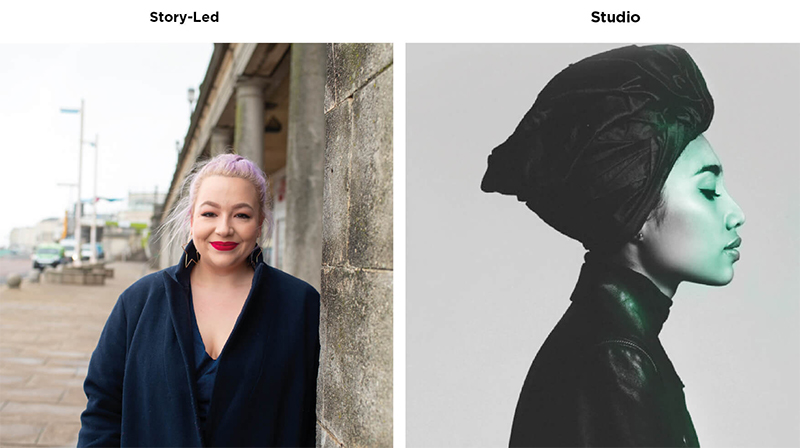
Story led portraits
Solo portraits
Focus should always be on the sitter. To achieve this we allow the background to recede into pictorial space through blurring, but it should still be clear where they are or where they’re from in order to tell a story. Where possible, the area around the sitter should be free from distracting background information.
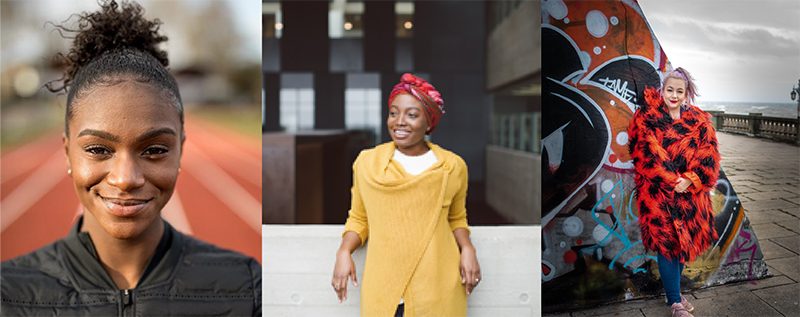
Programmes
We can celebrate our programmes by capturing young people in action. Joining a course can feel daunting, therefore, it’s important we portray these as fun, friendly and full of opportunities. Where possible, we use selective focus to highlight the main subject or moment of the image.
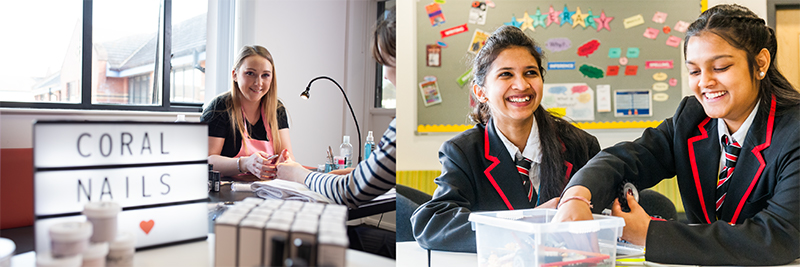
Group portraits
When photographing groups, we can draw attention to one person through selective focus. In situations where multiple people are in focus, we aim to keep the background free from distracting information. The groups don’t always need to be looking at the camera, natural interaction between sitters shows a genuine feeling of friendship, teamwork and social confidence.
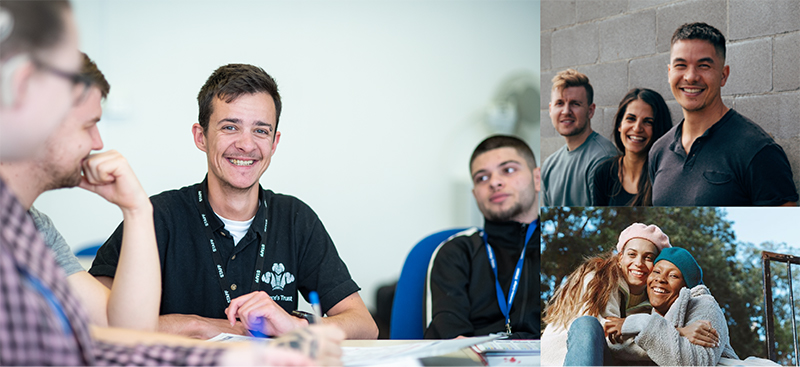
Emotions
Authentic emotion is a useful way of capturing the positive spirit of The Prince’s Trust, particularly on social media. These images should be captured in action, rather than set-up.
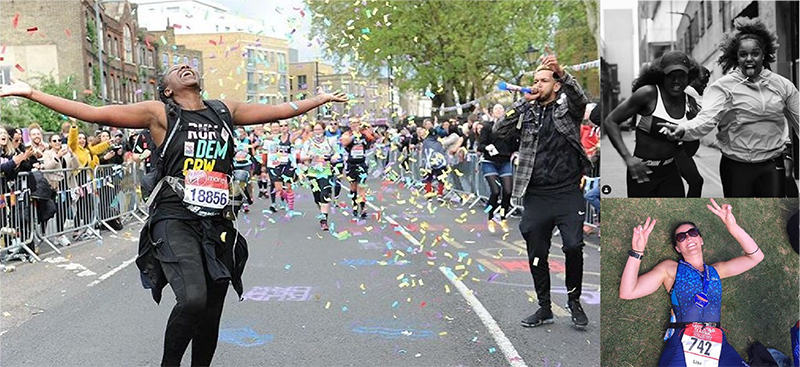
Studio portraits
We sometimes organise photoshoots in a studio, which could showcase young people in a variety of ways whether on their own, pairs or as a group. These shots could be for a campaign or general brand communication.
This is where we show a strong attitude that feels empowering. Our brand is strong and powerful, we want to show that the people we help are given space to unlock their potential..
Photographing our young people in a studio environment, using a plain, clean background. This allows us to create a strong and simple image on which other brand assets can be applied. One way we can do studio photography is by focussing on the young person against a plain grey or white background. Brand colours can be used when necessary.
To help create a branded approach to our studio photography, we have the option of using coloured lighting as an additional effect. Shining light on our people by highlighting them in brand colours.

Studio Photography Don’ts
A – When applying our Chevron, make sure that the subject is facing the same direction.
B – If the highlight colour is being applied in photoshop, make sure that the highlights are not overpowering or unnatural.
C – Give space around the subject so that we have a rich narrative and canvas to apply our other brand assets and text.
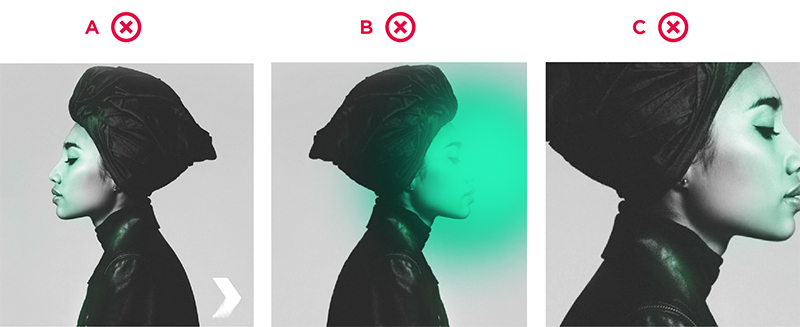
Applying Our Chevron to photography
We are able to incorporate our Chevron into our photography to create a Prince's Trust branded image.
- When deciding if to apply additional assets to photography, we need to consider the context in which the image is being seen. If the image is placed in close proximity to another Chevron, the image may not need treatment.
- We need to consider if the image lends itself to having a graphic element applied. On group photography or images that have complex backgrounds, the graphic assets may complicate the image.
There are five different ways in which we apply our Chevron can be applied to a photograph. This gives us flexibility in deciding how prominent our Chevron should be in relation to the photograph.
- Option 01 - A simple sign off, giving the image space to breathe.
- Option 02 - Using the Chevron larger, sitting behind the subject.
- Option 03 - Using the Chevron to frame our subject.
- Option 04 - When a more subtle approach is required, the Chevron can be cropped into and overlayed as a transparent layer.
- Option 05 - We have the flexibility to treat photography in a variety of ways. Images can be turned monochrome or duotoned into our brand colours. The Chevron can then be applied using the ‘Lighten’ transparency blending mode, in Adobe Illustrator.
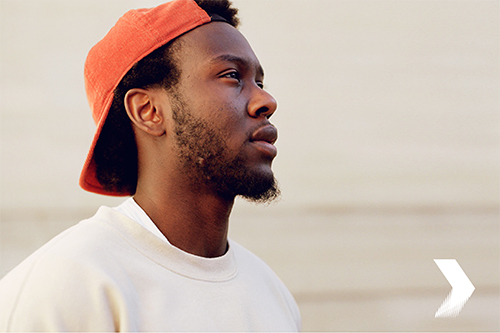
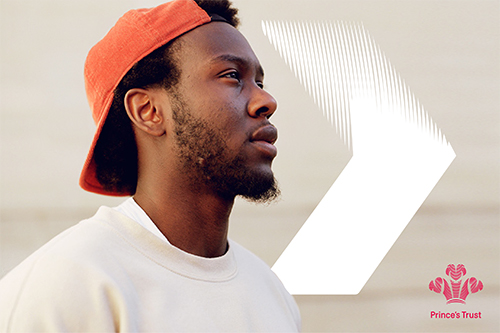
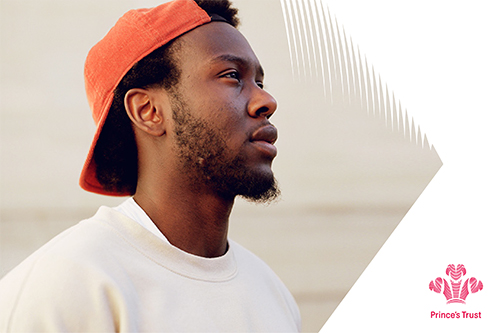
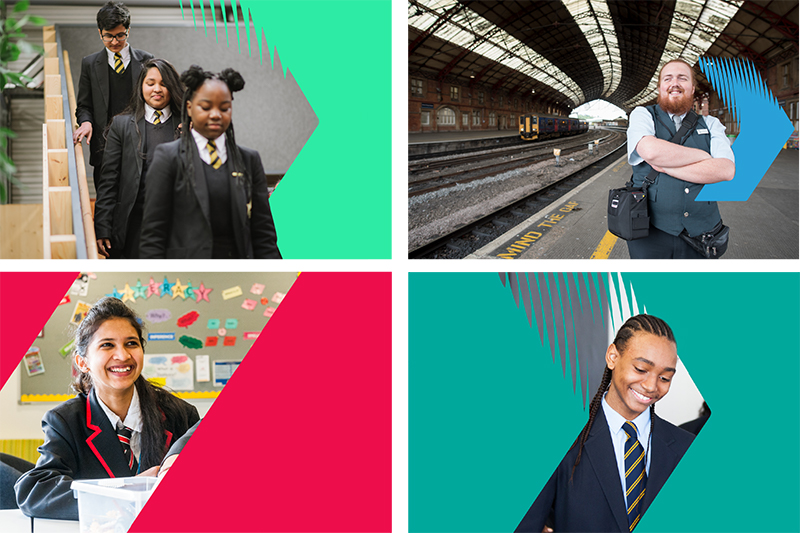
Chevron Application Don’ts
The application of our Chevron is image sensitive. Every photograph is different, so we need to be especially careful that the balance of the asset champions the image, rather than overpowering it.
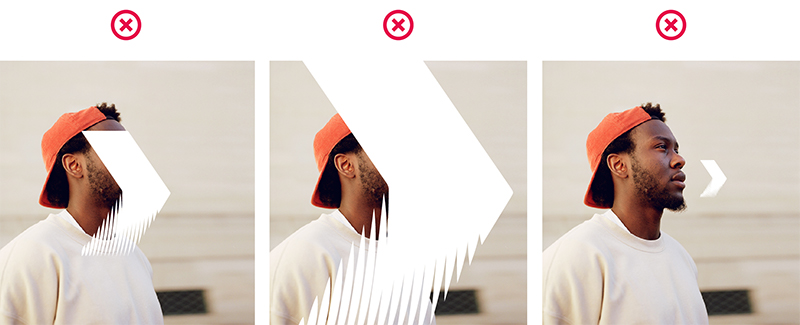
We love hearing your feedback and suggestions for our Brand Guide.
We’ve simplified and updated parts, and we're working on further improvements. If you see something you like or something that isn't working, let us know via this feedback form (Click link) so that we can keep making the guidance better.